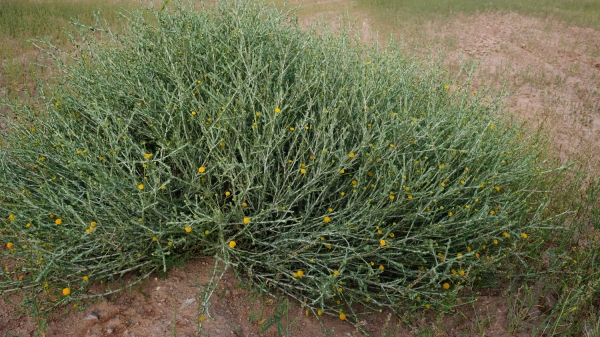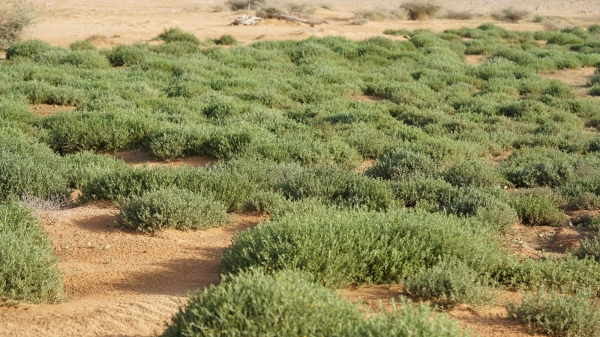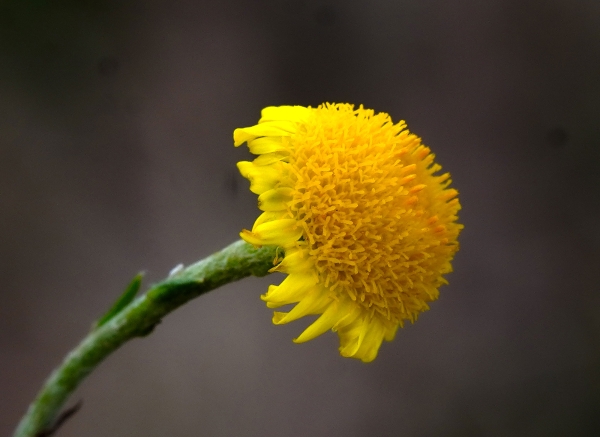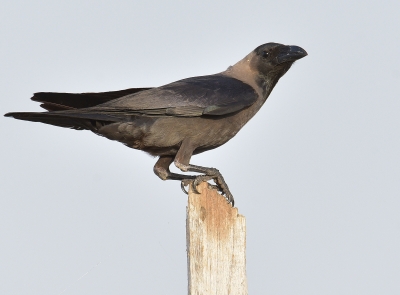


Pulicaria (Pulicaria crispa, Asteraceae) is a fast-growing desert shrub of the Asteraceae species. It is endemic to Saudi Arabia. It is found across the Arabian Peninsula. It is one of the plantable cover plants cultivated in Riyadh City for restoring natural vegetation. The shrub grows in subtropical lands, arid, or dry environments. It requires minimal care and is considered an annual perennial plant.
Pulcaria is sensitive to waterlogged conditions and urban environments. It can survive without irrigation and can withstand high salinity levels estimated at five thousand parts per million. It also has a frost tolerance down to minus six degrees Celcius.
Characteristics of the pulicaria
The plant grows into a small and short shrub featuring lateral and wedge-shaped roots. Its height ranges between forty and fifty cm. It bears multiple branches emanating from its base and olive greenish, alternate leaves with bristles. It bears yellow knots-shaped fragrant flowers that bloom in spring. the fruit of the plant is poor, two mm long, with bristles. The shrub does not bear much fruit. Its fruits grow up to two mm and feature bristles.
Growth of pulicaria
Pulicaria propagates by direct sowing and cuttings. It grows in sandy and rocky lands. It can withstand high salinity levels and can adapt to harsh desert conditions. It can withstand extreme heat, drought, and poor soil conditions.
Pulicaria is a fast-growing plant with a height of 0.4 to 0.5 m. It can expand over one m. The shrub no longer requires maintenance or irrigation upon planting in a specific location. It propagates by direct sowing, cuttings, or from seeds.
Uses of pulicaria
Pulicaria can be used with different plant seed mixtures for restoring vegetation covers or enhancing an ecosystem. Being a highly efficient shrub in ground coverage, it can be planted in natural gardens, such as rockeries and barren. It can also be used in bulks.
In terms of nutrition, pulicaria can be soaked to make a ginger-flavored drink.
Related quizzes
Related articles


